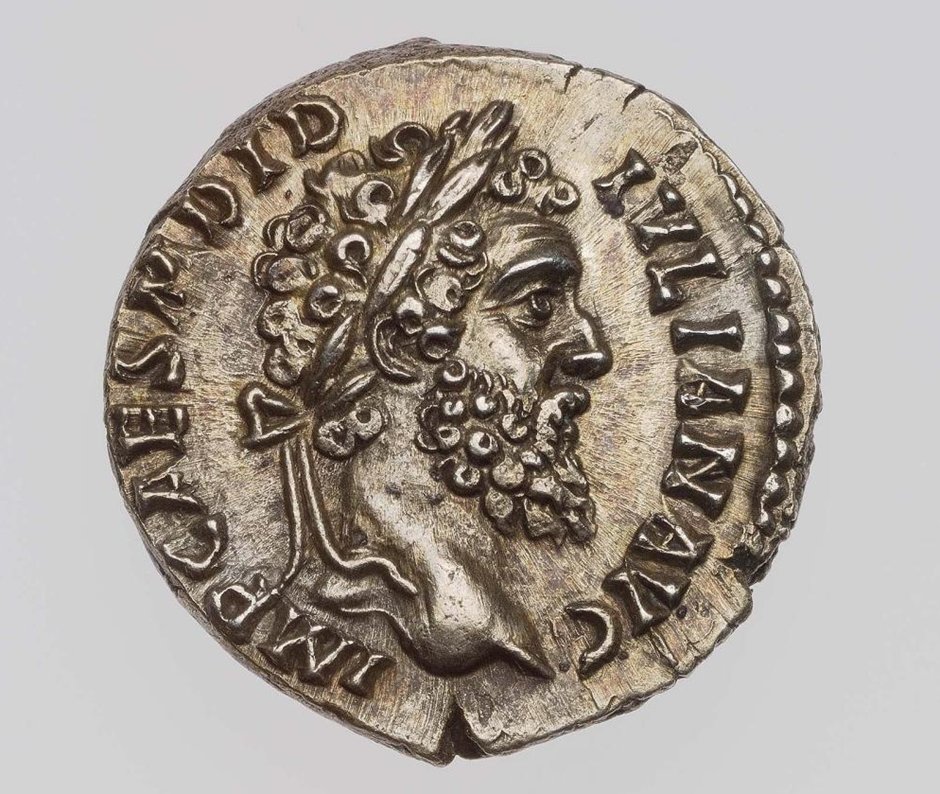Ancient Coin of the Day: A gander at some coins from Britain prior to the Claudian invasion of AD 43, in particular those of Cunobelinus, the origin of Shakespeare’s Cymbeline. #ACOTD #Numismatics #Britain 🧵
Image: British Museum (1977,0434.6). Link - britishmuseum.org/collection/obj…
Image: British Museum (1977,0434.6). Link - britishmuseum.org/collection/obj…

Cunobelinus was a local British ruler who exerted control over a large area of south-east England, ca. AD 10-40, with a capital at Colchester. He claimed to be the son of Tasciovanus, who had ruled a kingdom centred to the north of the Thames.
The Obverse of this coin shows an ear of spelt, with the flanking Legend CA-MV, i.e. ‘Camulodunum’, Cunobelinus’ capital. Strabo (4.5.2) notes that grain is a major export of Britain, so the emblem could refer to Cunobelinus’ international trade. 

The emblem could also respond to the coinage of Cunobelinus’ contemporary, Verica, which featured a vine-leaf Obverse. Verica was the third southern ruler to style himself ‘Son of Commius’, as on this Reverse.
Image: British Museum (1919,0213.168). Link – britishmuseum.org/collection/obj…

Image: British Museum (1919,0213.168). Link – britishmuseum.org/collection/obj…


Verica is likely the ‘Berikos’ whose expulsion from Britain was cited as a reason for Claudius’ invasion of AD 43 (Dio 60.19.1).
Image: British Museum (1919,0213.179). Link - britishmuseum.org/collection/obj…
Image: British Museum (1919,0213.179). Link - britishmuseum.org/collection/obj…

The Reverse of our original coin features a prancing horse, with the accompanying Legend CVNO, i.e. ‘Cuno(belinus)’. Again, the horse – or a mounted rider – was a popular numismatic emblem on British coins in this period. 

Later in his reign Cunobelinus also adopted Latin titles on his coins. Here he is defined as CVNOBELINVS REX on the Obverse, while the Reverse claims that he is TASC(IOVANI FILIUS) – ‘Son of Tasciovanus’.
Image: British Museum (1925,1201.1). Link - britishmuseum.org/collection/obj…

Image: British Museum (1925,1201.1). Link - britishmuseum.org/collection/obj…


Unlike the coin above, with the mint-mark for Camulodunum, those with the Legend TASCIOVANI F(ILIUS) are thought to have been minted at a second centre, perhaps Verulamiun (St Albans). 

Cunobelinus himself died before the Claudian invasion. Even though Suetonius described this as “a campaign of no importance” (Claudius, 17.1), Dio notes that “Caratacus and then Togodumnus, the sons of Cynobellinus” led the resistance against the Romans.
For articles on Cunobelinus’ coins, see:
Allen, D. F. “Cunobelin’s Gold.” Britannia 6 (1975): 1–19.
doi.org/10.2307/525986
Jersey, Philip de. “Cunobelin’s Silver.” Britannia 32 (2001): 1–44.
doi.org/10.2307/526949
#ACOTD #Numismatics #Britain 🧵
Allen, D. F. “Cunobelin’s Gold.” Britannia 6 (1975): 1–19.
doi.org/10.2307/525986
Jersey, Philip de. “Cunobelin’s Silver.” Britannia 32 (2001): 1–44.
doi.org/10.2307/526949
#ACOTD #Numismatics #Britain 🧵
• • •
Missing some Tweet in this thread? You can try to
force a refresh

 Read on Twitter
Read on Twitter













